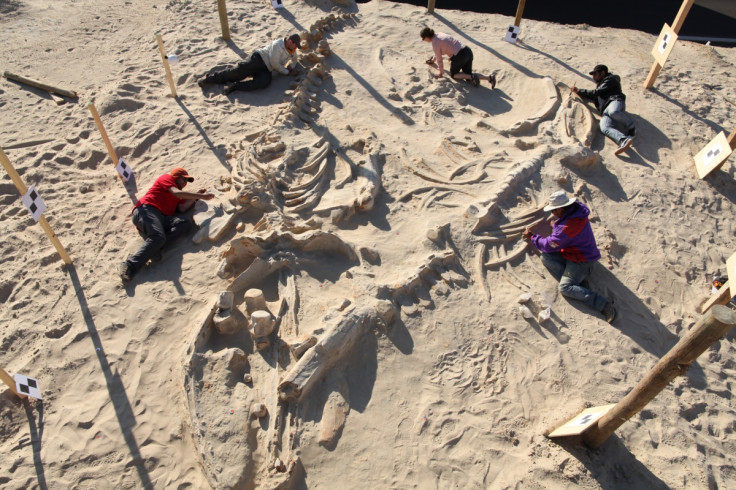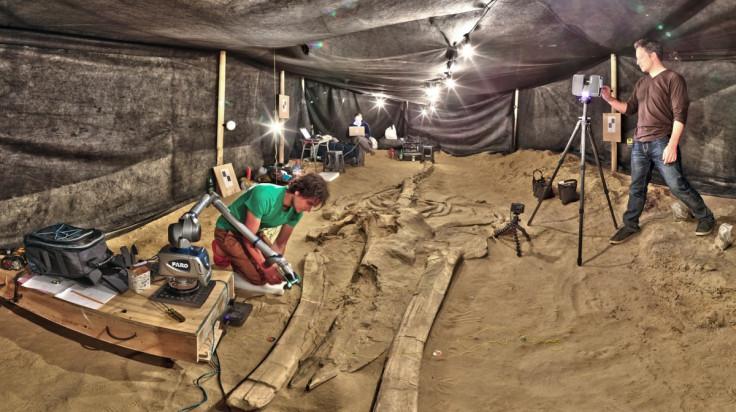Mysterious Ancient Whale Graveyard Cerro Ballena Explained Through 'Sudden Death at Sea'

The mystery surrounding an ancient whale graveyard discovered in northern Chile in 2010 has finally been explained by scientists.
The huge fossil site in the Atacama Desert, with bones dating from between six and nine million years ago, is the first example of repeated mass strandings of marine animals in the fossil record.
Buried in the desert for millions of years, the fossils come from four separate strandings over time, suggesting they were killed by a similar cause.
Published in the Proceedings of the Royal Society B, researchers from the Smithsonian National Museum of Natural History and the Universidad de Chile in Santiago documented the remains of 10 different types of marine vertebrates from the site, which has been named Cerro Ballena, or Whale Hill.

There were over 40 large baleen whales, a species of sperm whale, a walrus-like whale, billfishes, seals and aquatic sloths. They were arranged over four separate levels, with their orientation and condition suggesting they died at sea before being buried.
Researchers discovered that the whales were killed by toxic algae – one of the most common causes of mass stranding today.
Lead author Nicholas Pyenson, from the Smithsonian, said: "Harmful algal blooms in the modern world can strike a variety of marine mammals and large predatory fish. The key for us was its repetitive nature at Cerro Ballena: no other plausible explanation in the modern world would be recurring, except for toxic algae, which can recur if the conditions are right."
Harmful algal blooms are released during erosion and carried by rivers into the ocean. Because the Andes are iron rich, they provide the ideal conditions for algae to bloom.

Researchers believe the toxins from these blooms poisoned many creatures in the ocean during the late Miocene era through ingestion of contaminated prey or inhalation.
The creatures will have died relatively quickly out at sea, with their carcasses then floating towards the coast and washed ashore. Once there, their bodies were protected from marine waves and were eventually buried by sand.
Pyenson said: "Cerro Ballena is the densest site for individual fossil whales and other extinct marine mammals in entire world ... The site preserves marine predators that are familiar to modern eyes, like large whales and seals.
"However, it also preserves extinct and bizarre marine mammals, including walrus-like whales and aquatic sloths. In this way, the site is an amazing and rare snapshot of ancient marine ecosystems along the coast of South America."
© Copyright IBTimes 2024. All rights reserved.






